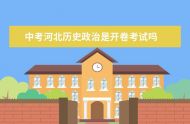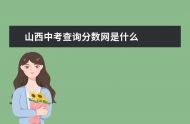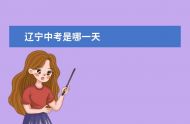今天大学路小编整理了2023年剑桥雅思阅读真题解析:Thomas Young(2023年雅思阅读真题全面解析及答案(3))相关信息,希望在这方面能够更好的大家。
本文目录一览:

2023年剑桥雅思阅读真题解析:Thomas Young
您好,我是专注留学考试规划和留学咨询的小钟老师。在追寻留学梦想的路上,选择合适的学校和专业,准备相关考试,都可能让人感到迷茫和困扰。作为一名有经验的留学顾问,我在此为您提供全方位的专业咨询和指导。欢迎随时提问!
对于雅思考生来说,剑桥雅思阅读题难不难?下面就和小钟老师一起来看看2023年剑桥雅思阅读真题解析:Thomas Young。
Thomas Young
The Last True Know-It-All
A Thomas Young (1773-1829) contributed 63 articles to the Encyclopedia Britannica, including 46 biographical entries (mostly on scientists and classicists) and substantial essays on "Bridge,” "Chromatics," "Egypt," "Languages" and "Tides". Was someone who could write authoritatively about so many subjects a polymath, a genius or a dilettante? In an ambitious new biography, Andrew Robinson argues that Young is a good contender for the epitaph "the last man who knew everything." Young has competition, however: The phrase, which Robinson takes for his title, also serves as the subtitle of two other recent biographies: Leonard Warren's 1998 life of paleontologist Joseph Leidy (1823-1891) and Paula Findlen's 2023 book on Athanasius Kircher (1602-1680), another polymath.
B Young, of course, did more than write encyclopedia entries. He presented his first paper to the Royal Society of London at the age of 20 and was elected a Fellow a week after his 21st birthday. In the paper, Young explained the process of accommodation in the human eye on how the eye focuses properly on objects at varying distances. Young hypothesized that this was achieved by changes in the shape of the lens. Young also theorized that light traveled in waves and he believed that, to account for the ability to see in color, there must be three receptors in the eye corresponding to the three "principal colors" to which the retina could respond: red, green, violet. All these hypothesis were subsequently proved to be correct.
C Later in his life, when he was in his forties, Young was instrumental in cracking the code that unlocked the unknown script on the Rosetta Stone, a tablet that was "found" in Egypt by the Napoleonic army in 1799. The stone contains text in three alphabets: Greek, something unrecognizable and Egyptian hieroglyphs. The unrecognizable script is now known as demotic and, as Young deduced, is related directly to hieroglyphic. His initial work on this appeared in his Britannica entry on Egypt. In another entry, he coined the term Indo-European to describe the family of languages spoken throughout most of Europe and northern India. These are the landmark achievements of a man who was a child prodigy and who, unlike many remarkable children, did not disappear into oblivion as an *.
D Born in 1773 in Somerset in England, Young lived from an early age with his maternal grandfather, eventually leaving to attend boarding school. He haddevoured books from the age of two, and through his own initiative he excelled at Latin, Greek, mathematics and natural philosophy. After leaving school, he was greatly encouraged by his mother's uncle, Richard Brocklesby, a physician and Fellow of the Royal Society. Following Brocklesby's lead, Young decided to pursue a career in medicine. He studied in London, following the medical circuit, and then moved on to more formal education in Edinburgh, Gottingen and Cambridge. After completing his medical training at the University of Cambridge in 1808, Young set up practice as a physician in London. He soon became a Fellow of the Royal College of Physicians and a few years later was appointed physician at St. George's Hospital.
E Young's skill as a physician, however, did not equal his skill as a scholar of natural philosophy or linguistics. Earlier, in 1801, he had been appointed to a professorship of natural philosophy at the Royal Institution, where he delivered as many as 60 lectures in a year. These were published in two volumes in 1807. In 1804 Young had become secretary to the Royal Society, a post he would hold until his death. His opinions were sought on civic and national matters, such as the introduction of gas lighting to London and methods of ship construction. From 1819 he was superintendent of the Nautical Almanac and secretary to the Board of Longitude. From 1824 to 1829 he was physician to and inspector of calculations for the Palladian Insurance Company. Between 1816 and 1825 he contributed his many and various entries to the Encyclopedia Britannica, and throughout his career he authored numerous books, essays and papers.
F Young is a perfect subject for a biography - perfect, but daunting. Few men contributed so much to so many technical fields. Robinson's aim is to introduce non-scientists to Young's work and life. He succeeds, providing clear expositions of the technical material (especially that on optics and Egyptian hieroglyphs). Some readers of this book will, like Robinson, find Young's accomplishments impressive; others will see him as some historians have - as a dilettante. Yet despite the rich material presented in this book, readers will not end up knowing Young personally. We catch glimpses of a playful Young, doodling Greek and Latin phrases in his notes on medical lectures and translating the verses that a young lady had written on the walls of a summerhouse into Greek elegiacs. Young was introduced into elite society, attended the theatre and learned to dance and play the flute. In addition, he was an accomplished horseman. However, his personal life looks pale next to his vibrant career and studies.
G Young married Eliza Maxwell in 1804, and according to Robinson, "their marriage was a happy one and she appreciated his work." Almost all we know about her is that she sustained her husband through some rancorous disputes about optics and that she worried about money when his medical career was slow to take off. Very little evidence survives about the complexities of Young's relationships with his mother and father. Robinson does not credit them, or anyone else, with shaping Young's extraordinary mind. Despite the lack of details concerning Young's relationships, however, anyone interested in what it means to be a genius should read this book.
Questions 1-7
Do the following statements agree with the information given in Reading Passage 1?
In boxes 1-6 on your answer sheet, write
TRUE if the statement is true
FALSE if the statement is false
NOT GIVEN if the information is not given in the passage
1 “The last man who knew everything” has also been claimed to other people.
2 All Young’s articles were published in Encyclopedia Britannica.
3 Like others, Young wasn't so brilliant when grew up.
4 Young's talents as a doctor are surpassing his other skills.
5 Young's advice was sought by people responsible for local and national issues.
6 Young was interested in various social pastimes.
7 Young suffered from a disease in his later years.
Questions 8-13
Answer the questions below.
Choose NO MORE THAN THREE WORDS AND/OR A NUMBER from the passage for each answer.
8 How many life stories did Young write for Encyclopedia Britannica?
9 What aspect of scientific research did Young do in his first academic paper?
10 What name did Young introduce to refer to a group of languages?
11 Who inspired Young to start the medical studies?
12 Where did Young get a teaching position?
13 What contribution did Young make to London?
文章题目:
Thomas Young—The Last True Know-it All
托马斯·杨——最后一个无所不知的人
篇章结构
体裁人物传记
题目托马斯·杨——最后一个无所不知的人
结构A段:托马斯·杨对百科全书的主要成就
B段:托马斯年轻时的主要成就
C段:托马斯晚年的主要成就
D段:托马斯童年的生活背景及成长经历
E段:托马斯作为自然哲学学者取得的成就
F段: 托马斯在其他领域的成就
G段:托马斯的感情生活
试题分析
Question 1-7
题目类型:True / false /not given
题号定位词文中对应点题目解析
1Other peopleA段第四句“Young has competition, however: The phrase, which Robinson takes for his title, also serves as the subtitle of two other recent biographies: Leonard Warren's 1998 life of paleontologist Joseph Leidy (1823-1891) and Paula Findlen's 2023 book on Athanasius Kircher (1602-1680), another polymath.”该句中明确给出了Young还有其他的竞争者,他们的传记中也同样拥有这样的小标题,分别是Leonard Warren写的关于Joseph Leidy的传记,以及 Paula Findlen's写的关于Athanasius Kircher的传记。
因此,本题答案为True
2all, articlesB段第一、二句B段第一句 “Young, of course, did more than write encyclopedia entries.”明确表示Young所做的远不仅仅是编辑大英百科全书的词条,因此并不是所有的都在百科全书。而在本段第二句中,作者指出,Young在20岁的时候将自己的第一篇论文自荐给伦敦皇家学会,并在一年后成为该学会的会员: He presented his first paper to the Royal Society of London at the age of 20 and was elected a Fellow a week after his 21st birthday。Paper与article为近意思。显然,题干与原文含义相反。
因此,本题答案为False
3likeC段最后一句C段整体是在介绍Young晚年的主要成就,即Young长大后的成就。此外,在C段最后一句中,作者明确指出Young和其他的孩子不同的一点在于,Young并没有像其他那些年少成名而后来江郎才尽的孩子一样,他后来同样取得了非凡的成就: These are the landmark achievements of a man who was a child prodigy and who, unlike many remarkable children, did not disappear into oblivion as an *.句中的unlike为like的反义词,显然题干与原文含义相反。
因此,本题答案为False
4surpassingD段第四、七句D段介绍了Young的成长背景和经历,同时体现出其涉猎范围较为广泛。其中第四句中提到Young决定学医,并且在后面的介绍中指出Young还参加戏剧演出,学习跳舞和吹笛子: He then broke with his Quaker upbringing by attending the theater and learning to dance and play the flute. In addition, he was an accomplished horseman.而在第七句中作者指出Young还是一名杰出的马术师。但是并未指出Young在哪个方面的造诣更高,更有天赋。Surpassing这个概念并没有在文中体现。
因此,本题答案为Not Given
5soughtE段第四句“ His opinions were sought on civic and national matters”,文中表明Young的很多观点关注人民和国家事务。题干与原文含义相同。
因此,本题答案为True
6Interested in, social pastimeF段第七句“We catch glimpses of a playful Young, doodling Greek and Latin phrases in his notes on medical lectures and translating the verses that a young lady had written on the walls of a summerhouse into Greek elegiacs.”文中指出,通过Young的医学演讲中乱写的希腊字母和拉丁短语以及将一位年轻女性写在凉亭上的诗歌翻译成希腊挽歌便能看出他的幽默。显然,Young对于这样的社交娱乐是感兴趣的。题干和原文相符合。
因此,本题答案为True
7disease, later yearsC段第一句,G段第一句C段第一句给出了“later in his life,”但是本段近讲述了Young晚年在学术方面的成就;G段给出了Young的婚后生活,以及Robinson在书中并未提及Young与父母间的关系。但无论哪一个点都没有提及其晚年饱受某种疾病之苦。
因此,本题答案为Not Given
题目类型:Short-answer question
8life storiesA段第一句“Thomas Young (1773-1829) contributed 63 articles to the Encyclopedia Britannica, including 46 biographical entries (mostly on scientists and classicists)…”该剧中的“biographical entries”指传记词条,与题干中的life stories表示相同涵义。
因此,本题答案为46
9first academic paperB段第三句“In the paper, on how the eye focuses properly on objects at varying distances, Young hypothesized that deformation of the crystalline lens accomplished the accommodation.”B段段首表明,Young将自己的第一篇论文自荐给了伦敦皇家学会学会。因此本段讨论的是其第一篇论文。而本段第三句指出,在这篇论文中,Young主要讨论了人类眼球的调节机制
因此,本题答案为humaneye或human eye accommodation
10a group of languagesC段第五句“In another entry, he coined the term Indo-European to describe the family of languages spoken throughout most of Europe and northern India.”该句指出,Young创造了术语 Indo-European来描述在欧洲大部分地区以及北印度使用的语言。
因此,本题答案为Indo-European
11inspire, medical studiesD段第四句D段前面介绍了Young童年时期的生活背景。本段第四句中则指出:“Following Brocklesby's lead, Young decided to pursue a career in medicine.”。显然,正是因为 Richard Brocklesby的引导,Young才决定在医学方面有所建树。
因此,本题答案为 Richard Brocklesby
12teaching positionE段第二句“ Earlier, in 1801, he had been appointed to a professorship of natural philosophy at the Royal Institution”,题干中的teaching position与E段第二句中的professorship均表示“教师职位”,该句明确指出,Young作为自然哲学的教授,受聘于英国科学研究所。
因此,本题答案为 Royal Institution
13LondonE段第五句“His opinions were sought on civic and national matters, such as the introduction of gas lighting to London and methods of ship construction.”E段主要介绍了Young作为自然哲学学者取得的成就。而第五句则列举了Young的两个成就,其对于伦敦的所做出的成就在于煤气照明的引入。
因此,本题答案为gas lighting
A我们该怎样理解托马斯·杨(1773-1829)?他是《大不列颠百科全书》中63篇文章的作者,其中包括46篇传记(大部分都是关于科学家和古典学者),和大量关于“桥” “色彩论” “埃及” “语吉” “潮汐”等的论文。一个能够写出这样多有权威性文章的人应该算是一个博学者? 一个天才?还是一个业余兴趣广泛的人呢?在一篇关于他的比较激进的传记中,Andrew Robinson 认为托马斯杨是-位强有力的竞争者能够配得这样的墓志铭“是最后一个知道任何事的人”。但是杨也要面对竞争:因为这样的传记标题Robinson不仅给了他,也作为副标题给了有关另两位学者的传记:Lenard Warren 1998年著的《古生物学家Joseph Leipy的一生》(1823-1891)以及Paula Findlen 2023年著的关于另一位博学者Athanasius Kircher(1602-1680)的传记。
B当然杨的贡献远不止写了很多百科全书上的文章,他在20岁的时候将自己的第一篇论文自荐给伦敦皇家学会,并在他的21岁生日后被评为一周科学人物,杨在该篇论文中解释了人类眼睛的调节机制一一关于眼睛如何通过不同的距离聚焦在物体上。在后面的文章中,他更加全面地探讨了这个问题,类似牛顿,他在自己身上进行了可怕的实验用以获得相关的证据,他还得出这样的理论:光是通过“以太”分子的振动,以波的形式进行传递的,而“以太”是一种假想物质,其存在还存在争议性。他还认为为了能看见颜色,必须要有3个感应器对“三原色”进行感应,而这三种视网膜对其产生感应的颜色就是红,黄,蓝二种颜色。
C在他人生的晚些时候,也就是40多岁的时候,杨试图破解锁在罗塞塔石碑里的未知文字密码,这个石碑是在1799年在埃及被拿破仑的军队发现的,并且从1802年起就在英国博物馆进行展出。该石碑上包含了 3种不同的字母:希腊语,不可辨识的文字以及埃及的象形文字。这种不可辨识的文字现在被认为是正如杨所推断的是很普通的,是和象形文字直接相关的。他最初有关这方面的工作首次出现在他在《大不列颠百科全书》中编纂的词条。在另一个条目中,他创造了术语“Indo-European”来描述在欧洲大部分地区以及北印度使用的语言。这些都是这是这位从小就展露科学天赋并且不像很多孩子后来江郎才尽的科学家获得的里程碑式的成就。
D托马斯·杨出生在英国萨默塞特郡一个虔诚的教友会教徒家庭,从小和他的外公一起长大,最后去了寄宿学校。他两岁的时候就博览群书,并且自学熟练掌握了拉丁语,希腊语,数学以及哲学,在很大程度上他受到了舅舅Richard Brocklesby的鼓励,他的舅舅也是英国皇家学会的一位内科医生。在Brocklesby的引导下,杨决定要在医学方而有所建树,他曾先后在伦敦大学、爱丁堡大学和格丁根大学学习医学,多亏了Brocklesby的引荐,杨进入了英国皇家学会,他最后也打破了从小在教友会的教育,他参加戏剧演出,学习跳舞和吹笛子,此外,他还是一位杰出的马术师。在1808年结束在剑桥大学的医学学习后,杨在伦敦开了一家诊所,很快他就成为皇家内科医生学会的一员,并且几年后成为圣乔治医院的一名内科医生。
E杨作为内科医生的医术却赶不上他作为自然哲学学者或是语言学家取得的成就,早在1801年,他已经被任命为英国皇家学会的教授,他每年要在那里举办60场的讲座。这些讲座在1807年以两本书的形式进行出版。1804年杨就已经成为英国朵家学会的秘书,而他获此殊荣直至去世。他的很多观点关注人民和国家事务,比如说在伦敦引进煤气照明和造船方法。从1819年起,他就是航海天文年历的主要负责人,也是Board of Longitude的秘书。从1824年到1829年,他担任Palladian 保险公司的精算师和内科医生。在1816年和1825年间,他为《大不列颠百科全书》编纂了许多词条,而且穷其一生著作,论文无数。
F我们通过杨在医学课上胡乱写的希腊字母和拉丁文短语以及他将一位年轻的女士写在避暑山庄墙上的诗句翻译成挽歌可以看出他的幽默,但是他的个人生活也因为自己对工作和研究的全情投入而略显苍白。
G他在1804年和Eliza Maxwell结婚,据Robinson所述“他们的婚姻是幸福的,因为他的夫人欣赏他的工作”。我们对于他夫人的了解仅限于她在她丈夫备受一些关于眼睛的理论方面争议的时候总是坚定地支持他,并且当他的医学生涯开始慢慢起飞的时候,她开始有些担心钱的问题。值得一提的是,杨没有被保护的人,他都是和自己的导师进行互动一一先是他的外公,后是Brocklesby一一还有先于他过失的一些伟人(其中很多是很著名的如牛顿,杨最早在17岁读了他写的书)。但是关于杨和他母亲以及父亲的关系的记述却鲜力人知,Robinson在说到杨的非凡的头脑时也并没有将其归功于他的父母,或许很难有这样的巧合:过去的天才都是由于卓越的父母教育造就的。
希望以上的答复能对您的留学申请有所帮助。如果您有任何更详细的问题或需要进一步的协助,我强烈推荐您访问我们的留学官方网站
,在那里您可以找到更多专业的留学考试规划和留学资料以及*的咨询服务。祝您留学申请顺利!
2023年雅思阅读真题全面解析及答案(3)
您好,我是专注留学考试规划和留学咨询的小钟老师。在追寻留学梦想的路上,选择合适的学校和专业,准备相关考试,都可能让人感到迷茫和困扰。作为一名有经验的留学顾问,我在此为您提供全方位的专业咨询和指导。欢迎随时提问!
小钟老师为大家带来2023年雅思阅读真题全面解析及答案(3),欢迎大家参考!更多相关内容请关注本站!
2023年雅思阅读真题全面解析及答案(3)
Can Scientists tell us: What happiness is?
A
Economists accept that if people describe themselves as happy, then they are happy. However, psychologists differentiate between levels of happiness. The most immediate type involves a feeling; pleasure or joy. But sometimes happiness is a judgment that life is satisfying, and does not imply an emotional state. Esteemed psychologist Martin Seligman has spearheaded an effort to study the science of happiness. The bad news is that we're not wired to be happy. The good news is that we can do something about it. Since its origins in a Leipzig laboratory 130 years ago, psychology has had little to say about goodness and contentment. Mostly psychologists have concerned themselves with weakness and misery. There are libraries full of theories about why we get sad, worried, and angry. It hasn't been respectable science to study what happens when lives go well. Positive experiences, such as joy, kindness, altrui* and heroi*, have mainly been ignored. For every 100 psychology papers dealing with anxiety or depression, only one concerns a positive trait.
B
A few pioneers in experimental psychology bucked the trend. Professor Alice Isen of Cornell University and colleagues have demonstrated how positive emotions make people think faster and more creatively. Showing how easy it is to give people an intellectual boost, Isen divided doctors making a tricky diagnosis into three groups: one received candy, one read humanistic statements about medicine, one was a control group. The doctors who had candy displayed the most creative thinking and worked more efficiently. Inspired by Isen and others, Seligman got stuck in. He raised millions of dollars of research money and funded 50 research groups involving 150 scientists across the world. Four positive psychology centres opened, decorated in cheerful colours and furnished with sofas and baby-sitters. There were get-togethers on Mexican beaches where psychologists would snorkel and eat fajitas, then form "pods" to discuss subjects such as wonder and awe. A thousand therapists were coached in the new science.
C
But critics are demanding answers to big questions. What is the point of defining levels of happiness and classifying the virtues? Aren't these concepts vague and impossible to pin down? Can you justify spending funds to research positive states when there are problems such as famine, flood and epidemic depression to be solved? Seligman knows his work can be belittled alongside trite notions such as "the power of positive thinking". His plan to stop the new science floating "on the waves of self- improvement fashions" is to make sure it is anchored to positive philosophy above, and to positive biology below.
D
And this takes us back to our evolutionary past. Homo sapiens evolved during the Pleistocene era (1.8 m to 10,000 years ago), a time of hardship and turmoil. It was the Ice Age, and our ancestors endured long freezes as glaciers formed, then ferocious floods as the ice masses melted. We shared the planet with terrifying creatures such as mammoths, elephant-sized ground sloths and sabre-toothed cats. But by the end of the Pleistocene, all these animals were extinct. Humans, on the other hand, had evolved large brains and used their intelligence to make fire and sophisticated tools, to develop talk and social rituals. Survival in a time of adversity forged our brains into a persistent mould. Professor Seligman says: "Because our brain evolved during a time of ice, flood and famine, we have a catastrophic brain. The way the brain works is looking for what's wrong. The problem is, that worked in the Pleistocene era. It favoured you, but it doesn't work in the modem world."
E
Although most people rate themselves as happy, there is a wealth of evidence to show that negative thinking is deeply ingrained in the human psyche. Experiments show that we remember failures more vividly than successes. We dwell on what went badly, not what went well. Of the six universal emotions, four anger, fear, disgust and sadness are negative and only one, joy, is positive. The sixth, surprise, is psychologist Daniel Nettle, author of Happiness, and one of the Royal Institution lecturers, the negative emotions each tell us "something bad has happened" and suggest a different course of action.
F
What is it about the structure of the brain that underlies our bias towards negative thinking? And is there a biology of joy? At Iowa University, neuroscientists studied what happens when people are shown pleasant and unpleasant pictures. When subjects see landscapes or dolphins playing, part of the frontal lobe of the brain becomes active. But when they are shown unpleasant images a bird covered in oil, or a dead soldier with part of his face missing the response comes from more primitive parts of the brain. The ability to feel negative emotions derives from an ancient danger-recognition system formed early in the brain's evolution. The pre-frontal cortex, which registers happiness, is the part used for higher thinking, an area that evolved later in human history.
G
Our difficulty, according to Daniel Nettle, is that the brain systems for liking and wanting are separate. Wanting involves two ancient regions the amygdala and the nucleus accumbens that communicate using the chemical dopamine to form the brain's reward system. They are involved in anticipating the pleasure of eating and in addiction to drugs. A rat will press a bar repeatedly, ignoring sexually available partners, to receive electrical stimulation of the "wanting" parts of the brain. But having received brain stimulation, the rat eats more but shows no sign of enjoying the food it craved. In humans, a drug like nicotine produces much craving but little pleasure.
H
In essence, what the biology lesson tells us is that negative emotions are fundamental to the human condition, and ifs no wonder they are difficult to eradicate. At the same time, by a trick of nature, our brains are designed to crave but never really achieve lasting happiness.
Question 14-20
The reading passage has seven paragraphs A-H.
Which paragraph contains the following information?
Write the correct letter A-H, in boxes 14-20 on your answer sheet.
14 An experiment involving dividing several groups one of which received positive icon
15 Review of a poorly researched psychology area
16 Contrast being made about the brain’s action as response to positive or negative stimulus
17 The skeptical attitude toward the research seemed to be a waste of fund
18 a substance that produces much wanting instead of much liking
19 a conclusion that lasting happiness are hardly obtained because of the nature of brains
20 One description that listed the human emotional categories
Question 21-25
Complete the following summary of the paragraphs of Reading Passage, using no more than four words from the Reading Passage for each answer.
Write your answers in boxes 21-25 on your answer sheet.
A few pioneers in experimental psychology study what happens when lives go well. Professor Alice divided doctors, making a tricky experiment, into three groups: beside the one control group, the other two either are asked to read humanistic statements about drugs, or received …21... The latter displayed the most creative thinking and worked more efficiently. Since critics are questioning the significance of the …22…for both levels of happiness and classification for the virtues. Professor Seligman countered in an evolutional theory: survival in a time of adversity forged our brains into the way of thinking for what's wrong because we have a…23…
There is bountiful of evidence to show that negative thinking is deeply built in the human psyche. Later, at Iowa University, neuroscientists studied the active parts in brains to contrast when people are shown pleasant and unpleasant pictures. When positive images like…24…are shown, part of the frontal lobe of the brain becomes active. But when they are shown unpleasant image, the response comes from …25…of the brain.
Question 26
Write your answers in boxes 26 on your answer sheet.
Choose the correct letter. A, B, C or D.
According to Daniel Nettle in the last two paragraphs, what is true as the scientists can tell us about happiness
A Brain systems always mix liking and wanting together.
B Negative emotions can be easily rid of if we think positively.
C Happiness is like nicotine we are craving for but get little pleasure.
D The inner mechani* of human brains does not assist us to achieve durable happiness.
文章题目:科学家可以告诉我们什么是幸福吗
篇章结构
体裁
议论文
题目
科学家可以告诉我们什么是幸福吗
结构
(一句话概括每段大意)
A段: 关于幸福的早期心理学研究主流是负面情绪
B段: 少数心理学家研究正面情感带给人的益处
C段: 批评家质疑用积极思考来研究幸福的合理性
D段: 冰河世纪的古人类惯用消极思维模式
E段: 消极想法更容易被牢记
F段: 积极和消极想法的大脑结构的生物学基础
G段: 区分喜欢和欲望是研究幸福的难点
H段: 消极情绪是人类生存的基础
试题分析
Question 14-26
题目类型:
题号
定位词
文中对应点
题目解析
14
Three groups
B段第2句
B段讲述了少数心理学家对积极情绪的研究。从第2句话开始,文章详述了实验的方法,题干中的positive icon指代文中的candy。
本题答案为B
15
Ignored,only
A段最后两句
A段是关于早期心里学家研究幸福的方法。从该段最后两句可以看出,积极的情绪在当时的研究被ignored,并且在100个试验中,only one concerns a positive trait。这里的ignored/only/a都是在映射题干中的poorly researched。
本题答案选A
16
Structure of the brain
F段第1句
F段讲述了积极和消极想法的大脑结构的生物学基础。从第一句话的structure of brain可以看出,本段会研究brain action。
本题答案选F
17
Critics, big question
C段第1句
C段是针对B段的观点,批评家质疑少数心理学家研究幸福的方式。从critics, big question, what is the point of…等地方,均可以看出题干中所述的skeptical attitude。
本题答案选C
18
Wanting, liking
G段第1句
G段落主要讲wanting和liking的在大脑系统中的区别。从第1句开始,该段多次出现wanting和liking。
所以本题答案选G
19
Brick of nature
H段第2句
H段是全文最后一段,所以很容易于题干中的conclusion联系在一起。另外在H段第 2句也出现了brick of nature,指代题干中的nature of brains。
本题答案选H
20
Six universal emotion
E段中间
E段中提到了人类最基础的六种情感,对应题干中的human emotional categories。
本题答案选E
21
Candy
B段
B段中详细描述了实验的三个分组情况。Into three groups: one received candy, one…
所以本题可以从原文中直接找到答案为candy。
22
What is the point of defining…
C段
从题干中的Since critics可得知此题对应原文中的C段。该段第2句话what is the point of defining levels of happiness and classifying the virtues。所以本题需要填写define的名词definition。
23
Professor Seligman, adversity
D段倒数第三局
D段倒数第3句:Professor Seligman says: because our brain evolved during a time of ice, flood and famine, we have a catastrophic brain。从题干中的Professor Seligman提示了答案应该从这句话中寻找。另外题干中的adversity对应了文章中的ice flood和famine。因此每题应该填catastrophic brain
24
Pleasant picture
E段第3句
E段第3句 讲述了pleasant and unpleasant picture对人类大脑的影响,之后紧接着提到了landscapes and dolphins playing。可见这里的positive image应该填文章中对应的pleasant picture,即landscapes and dolphins playing。
25
Unpleasant images
E段第4句
此题答案紧接着上一题。作者在E段中描述了pleasant picture之后,紧接着提到了unpleasant image(picture)。在该句的末尾处comes from more primitive parts of the brain可以找到改题的答案为 more primitive parts
26
Separate, deeply ingrained, wanting and liking, lasting happiness
E、G、H段
A选项: G段的第一句话brain system for liking and wanting are separate,因此选项中的mix together是错误的。
B选项: 在E段中,作者主要表述了消极思想和情感在大脑中会留下深刻的记忆,并很难被抹去: negative thinking is deeply ingrained in the human psyche。Deeply ingrained和题干中的be easily rid of矛盾。
C选项:G段最后一句,drug like nicotine produces much craving but little pleasure。看似与题干很吻合但是却在意思上大相径庭。G段的核心思想是在强调happiness和满足wanting后的satisfaction是两个概念。题干中的nicotine只是满足了人类大脑的wanting,但是不会带来pleasant,更不会带来happiness。所以这个选项也是错误的。
D选项:H段最后一句,our brain are designed to crave but never really achieve lasting happiness意思与题干一致,表述了由于大脑结构导致了很难持续或者幸福感。
所以本题选D
参考译文:
科学家可以告诉我们什么是幸福吗
A
经济学家认为,如果人们会把自己描述成幸福的,那么他们就是幸福的.然而 心理学家却要区分不同幸福感之间的差别。幸福最中等的水平是一种开心或是快乐的感觉。但是有时幸福是对生活的一种评判,认为生活是令人满意的,而这似乎是不涉及感情范畴的。受人敬仰的心理学家Martin Seligman率先致力于关于幸福的研究。不幸的是,我们并不是天生就会感到幸福;而所幸的是,我们可以做一些关于幸福的事情。关于幸福的研究最早要追溯 到130年前在Leipzig的实验室,那时心理学对“善良”和“满足”还知之甚少, 大部分的心理学家都在研究“软弱”和“痛苦”。图书馆里的书涉及的理论都是关于我们为什么会悲伤,担忧和生气这类的情绪。研究生活乎顺时发生的事情在当时看来是不靠谱的。积极正面的体验,比如说快乐,善良,利他主义和英雄主义在当时常常是被人们忽略的。在每100篇关于焦虑和压抑的心理学论文中,只有一篇会涉及积极的心理状态。
B
少数的实验心理学家引领了有关幸福研究的潮流。康奈尔大学的Alice Isen教授和她的同事致力于研究正面的情感如何让人们思维更敏捷以及更有创造力。为了展示正面的情感是怎样迅速地提升一个人的智力,Isen教授通过一个巧妙的诊断将参加实验的医生分为3组:一组收到了糖果,一组朗读人本主义的宜言,一组则作为控制对照组,(实验结果表明,)收到糖果的医生的思维更具创造性同时工作也更高效,受到Isen教授和其他人的启发,Seligman也投身关于幸描的研究,他等集到了几百万美金的研究经费,用以资助全世界150名科学家组成的50个研究小组。4家“积极心理学”中心成立,用令人愉悦的颜色装饰, 配有沙发和保姆。心理学家聚集在墨西哥的沙滩上享受着潜水的乐趣,品尝墨西哥菜肴fajitas,他们还分成小组讨论有关“夸迹”和“敬畏"的话题。还有一千名临床医学家接受这项新科学项目的培训。
C
但是一些批评家要求心理学家回答一些重大的问题,比如说,什么是定义不同幸福水平的标准以及如何将这些特点分类?这些关于幸福的概念难道不是糢糊不清而且无法被这实的吗?当四处还有饥荒,洪水和经济萧条的时候,将这些研究基金用于积极心态的研究合适吗?Seligman知道他的工作会被别人轻看,还可能会被人冠以诸如“积极思考的力量”此类的陈词滥调。因此,为了让这样新的科学研究不要浮于自我满足的状态,就要确保这项研完和“枳极心理学”相联系,又以“枳极生物学”作为基础。
D
这就需要我们回到人类的进化史,人类是从更新世时代(180万到1万年前)开始进化的,那是一个充满艰难和动荡的时代。在冰河世纪,我们的祖先先是忍受冰川形成的寒冷,然后是冰川消融时的泛滥的洪水。人们还得和那些令人毛骨悚然的生物比如说猛犸象和体型如大象般巨大的地懒以及长着锐利犬牙的猫共同生存。但是到了更新世的末期,所有的这些动物都灭绝了,人类却进化出了脑容量更大的大脑,并且通过自己的智力学会生火和*较复杂的工具,还学会了说话并且形成了一些社会礼仪。在逆境中生存将人类变得更加有恒心和毅力。Seligman教授说道:“因为我们的大脑是在一个充满冰川,洪水和饥荒的年代进化来的,我们的大脑经历了太多患难—灾难性,所以我们的大脑的运作模式就是 “发现哪里出了问题”。但问题是,这在更新世那样的时代是起作用的,在那时这对人类是有益的,但是在现代社会就不起作用了。
E
尽管大多数人评价自己很幸福,但是大量证据显示消极的想法还是在人类心中根深蒂固。实验显示,较成功而言,失败更容易被我们牢牢记住。我们总是在思想一些不顺利的事情,而不是那些顺利的好的事情。在6种基本的情绪中,有4种是消极的,它们是:生气,害怕,厌恶和悲伤,而只有一种是积极的,它就是喜悦。(第6种情绪是惊奇,属于中性。)心理学家同时也是《幸福》这本书的作者Daniel Nettle和皇家学院的一位学者认为,消极的情绪总是告诉我们“一些不好的事情已经发生了”,从而会让我们采取不一样的行动。
F
究竟是什么样的大脑结构让我们会倾向于有消极的想法呢?“快乐”这样的情绪有生物学基础吗?爱荷华大学的神经学家研究了当人们看到令人愉悦的图片和让人不舒服的图片时的情况。当人们看到风景或是海豚玩耍时,大脑的额叶会变得活跃。但是当他们看到一些让人不舒服的图片比如说一只小鸟被埋在土里时,或是一个战死的战士面部还有部分缺失时,大脑最原始的部分会做出反应。这种识别消极情绪的能力是从古时候大脑进化早期形成的危险识别系统来的。大脑前额叶皮质是产生幸福感的部位,是用来进行一些高级的思考,是人类晚些时期进化来的。
G
据Daniel Nettle所言,研究的困难在于大脑对于“喜欢”和“欲望”(wanting and liking)的机制是分开的,“欲望”涉及两个最初大脑发育的部位,也就是扁桃体和神经大脑区,它们通过化学多巴酚传递信息来形成大脑的奖励机制。它们常常是让人们很期待吃完东西的*或是对药品上瘾。小白鼠会不停地击打栅栏来获取对大脑“欲望”情绪的电*,而忽略异性同伴,但是获得大脑*的小白鼠虽然吃得更多,但是并没有迹象表明它在吃到自己渴想的食物后有一种满足感。对人而言,像尼古丁这样的物质会让人想要摄取更多但是却带来很少的*。
H
从本质上来看,生物课可以告诉我们消极的情绪是人类生存的基本情绪,所以难怪它很难根除。与此同时,让人觉得很诡异的是,我们的大脑总是想要的很多,但是却很难真正得到持续的幸福感。
参考答案:
Version 19104 主题 幸福的科学解释
14
B
15
A
16
F
17
C
18
G
19
H
20
E
21
Candy
22
definition
23
a catastrophic brain
24
landscapes or dolphins playing
25
(more) primitive parts
26
D
希望以上的答复能对您的留学申请有所帮助。如果您有任何更详细的问题或需要进一步的协助,我强烈推荐您访问我们的留学官方网站
,在那里您可以找到更多专业的留学考试规划和留学资料以及*的咨询服务。祝您留学申请顺利!
剑桥雅思阅读6 test3答案?
关键词: 3000 BC, cocoon, fell into, emperor's wife
定位原文: 第1段第5句“It just so happened that... ” 这些蚕茧中的一粒掉进了热茶中并开始松散成为一根细丝。
解题思路: “3000BC”和“皇帝的妻子”都很好定位,在第一段的第二句中便可看到,但却偏偏没有“掉进”这个信息,直到读者看到第五句中的landed in这个同义表述才能恍然大悟,答案为tea。
【附解析】
Question 2
答案: reel
关键词: emperor's wife, invented, pull out silk fibres
定位原文: 第1段第8句“She also devised a special reel to draw... ”她还设计发明了一种特殊的卷轴来将蚕茧中的纤维纺成丝线。
解题思路: 此题的定位距离上一道题不远,仍是皇帝妻子所做的事。题干说“皇帝的妻子发明了一个 _____ 来拽出丝绸纤维”,读者只需回到原文找到devised这个对invented进行同义表述的单词,即不难发现答案为reel。
以上就是大学路小编给大家带来的2023年剑桥雅思阅读真题解析:Thomas Young(2023年雅思阅读真题全面解析及答案(3))全部内容,希望对大家有所帮助!
免责声明:文章内容来自网络,如有侵权请及时联系删除。
 四川大学眉山校区正式签约落户 2023年计划招生
四川大学眉山校区正式签约落户 2023年计划招生
 云南2023年普通高校招生第一次英语听力考试和口语测试网上报名考生须知
云南2023年普通高校招生第一次英语听力考试和口语测试网上报名考生须知
 北京2023年中考是哪一天 2023年北京中考日期
北京2023年中考是哪一天 2023年北京中考日期
 天津2023年中考是哪一天 2023年天津中考日期
天津2023年中考是哪一天 2023年天津中考日期
 河北2023年中考是哪一天 2023年河北中考日期
河北2023年中考是哪一天 2023年河北中考日期
 山西2023年中考是哪一天 2023年山西中考日期
山西2023年中考是哪一天 2023年山西中考日期
 内蒙古2023年中考是哪一天 2023年内蒙古中考日期
内蒙古2023年中考是哪一天 2023年内蒙古中考日期
 辽宁2023年中考是哪一天 2023年辽宁中考日期
辽宁2023年中考是哪一天 2023年辽宁中考日期
 吉林2023年中考是哪一天 2023年吉林中考日期
吉林2023年中考是哪一天 2023年吉林中考日期
 黑龙江2023年中考是哪一天 2023年黑龙江中考日期
黑龙江2023年中考是哪一天 2023年黑龙江中考日期









